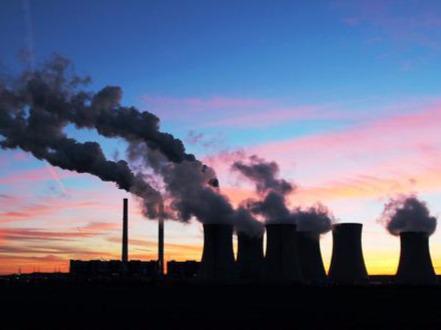






2. Pellets 8mm
3. 6-8 mm DIN+ Quality Pellets
4. We manufacture and sell fuel pellets from straw to European countries
5. Sell wood pellets
6. Wood pellet manufacturing
7. Sunflower Husk Pellets
8. Din Plus Wood Pellets
9. Export of sunflower husk pellets to the European market
10. Export of sunflower husk pellets to the European market
Unpopular Coal for burning biomass
Thu-16-2016
Drax Group Plc’s three coal-fired power units could be thrown a lifeline by the challenge of keeping the lights on and the grid balanced in Britain, even as renewable energy and cheap natural gas squeeze margins for the dying fuel.
Convert remaining coal units to burn biomass
The electricity producer had planned to convert its remaining coal units to burn biomass, making all of the giant power station run on the renewable fuel. The conversion has stalled amid uncertainty over subsidies that in 2015 brought in 450 million pounds ($657.5 million) a year. Instead, Drax sees future revenue for the generators coming from helping to balance the grid, Andy Koss, the station’s chief executive officer, said in an interview.
Keeping the 4,900 mile-long network of wires and cables in balance during peaks and troughs in demand is getting harder for National Grid Plc as unpredictable renewable energy gains importance and utilities from Scottish Power Ltd. to SSE Plc close old coal-fired stations. While the U.K. government plans to exit coal completely by 2025, fossil-fueled units are becoming more valuable to the grid in providing backup capacity.
“Running a coal plant is becoming more of a challenge and you have to look more widely at the opportunities that are out there, or you start to look at mothball or closure,” Koss said in his office at the plant in northeast England. While Drax’s coal units are still profitable at peak times and in the balancing market, running hours are drying up and the company will need other ways to cover its costs, he said.
Drax is the most efficient coal-fed station in Britain
With its 12 iconic cooling towers in Selby near Leeds in North Yorkshire, Drax is the youngest and most efficient coal-fed station in Britain. On site, receding piles of coal lie opposite a building that handles the biomass fuel as the station’s history confronts its future.
As renewable energy revolutionizes energy markets, the changes trickle down to the workers at the plant. Jim Banks, a worker at the station for 38 years, used to clean up spills around the plant equipment and is now monitoring screens in the control room, ready to adjust output as soon as the call comes from Drax’s traders.
Britain’s margin of spare capacity is set to shrink to zero next winter without the added so-called Supply Balancing Reserve. The issue of dwindling power reserves was brought to the fore on May 9 when the grid asked for extra capacity to be made available after multiple plants halted unexpectedly. That followed a similar request in November, the first in three years.
Droping power generation from coal and a black start contract for ancillary services
Power generation from coal dropped to zero on May 10 and again on May 12 amid low demand. It was the first time in “a hundred-odd years” that the grid has operated with no coal, John Pettigrew, chief executive officer of National Grid, said in a call with analysts on May 19.
“Even environmentalists in their wildest dreams wouldn’t have expected zero coal already in 2016,” Jon Ferris, strategy director at Utilitywise, a Newcastle, England-based utility, said by phone. “The U.K. doesn’t have a capacity problem, it has a flexibility problem” as intermittent renewables disrupt the periods when coal and gas plants are traditionally needed, he said.
National Grid is already offering contracts for so-called ancillary services that guarantee the network can function under stress. They range from frequency response, or keeping the grid frequency at 50 hertz, to black start, where a station must start up in emergency conditions. Drax already has a black start contract for one unit. It had a frequency-response deal in the past and is considering tendering for it again, Koss said.
Response power can start up within one second for biomass units
The grid pays about 770 million pounds a year for such services. The network operator will in July tender for super-fast response power output that can start up within one second, using technology including batteries, according to its website. Drax’s biomass units may also be a good fit, Koss said.
“The characteristics of the network have changed - we see a lot of solar in the day, a lot of wind - the challenge it throws up is particularly around intermittency,” Pettigrew said. “As the network is evolving, we’re having to develop new products to make sure that we can manage the system.”
There is a shift from balancing services being an additional revenue stream to being the main revenue stream for some generators, said Adam Sims, a manager for system operations at National Grid.
Peak demand this summer, corrected for weather, is forecast at a record low 35.7 gigawatts while minimum demand is set to drop 1.6 percent to 18.1 gigawatts from the previous year, according to grid data.
“There is a bigger need for system stability and there are fewer operators available to provide that, and we’re one of those providers,” Koss said. “It’s not economic for our coal units to run overnight and we can only provide that service if our costs are being covered.”
Source: http://ukrfuel.com/news-drax-sees-lifeline-in-unpopular-coal-as-117.html
Any copying and distributing withoutactive hyperlink is strictly prohibited!
Views: 1825
 Stobart biomass division is to make a deal
Stobart biomass division is to make a deal
Biomass Related News
- Flexible solar batteries become a reality
- Public hearing on solar panel
- In Ukraine the number of solid fuel (wood pellets) producers in 2011 - 2012 doubled
- Safety Concerns about wood pellets
- 'Neutral' position of Drax in EU
- Banana waste as a biomass
- New international climate agreement of carbon losses
- Advanced Bioeconomy Leadership Conference– Feedstocks
- Drax Group broker ratings
- Australia transits to solar power generation
|
© Ukrainian Biofuel Suppliers 2008-2024 |
